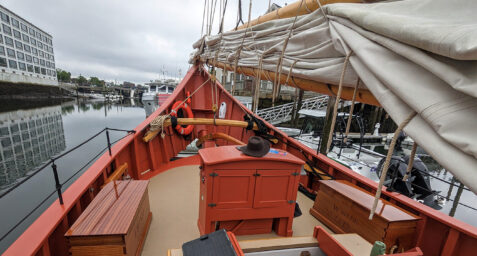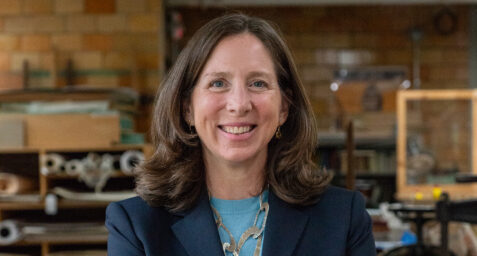Writing History
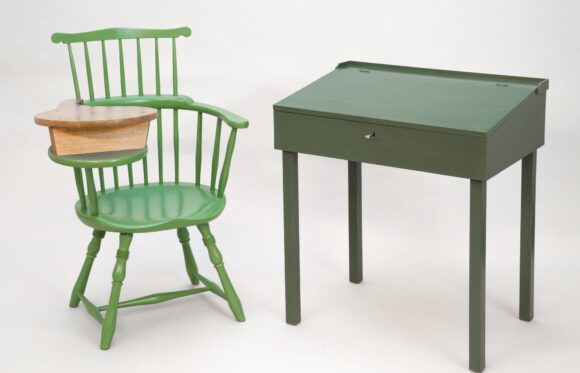
Categories
Cabinet & Furniture MakingVisitors from all over the world have long been drawn to Concord, Massachusetts, for its rich literary history and the opportunity to view the artifacts of writers like Ralph Waldo Emerson and Henry David Thoreau, among others.
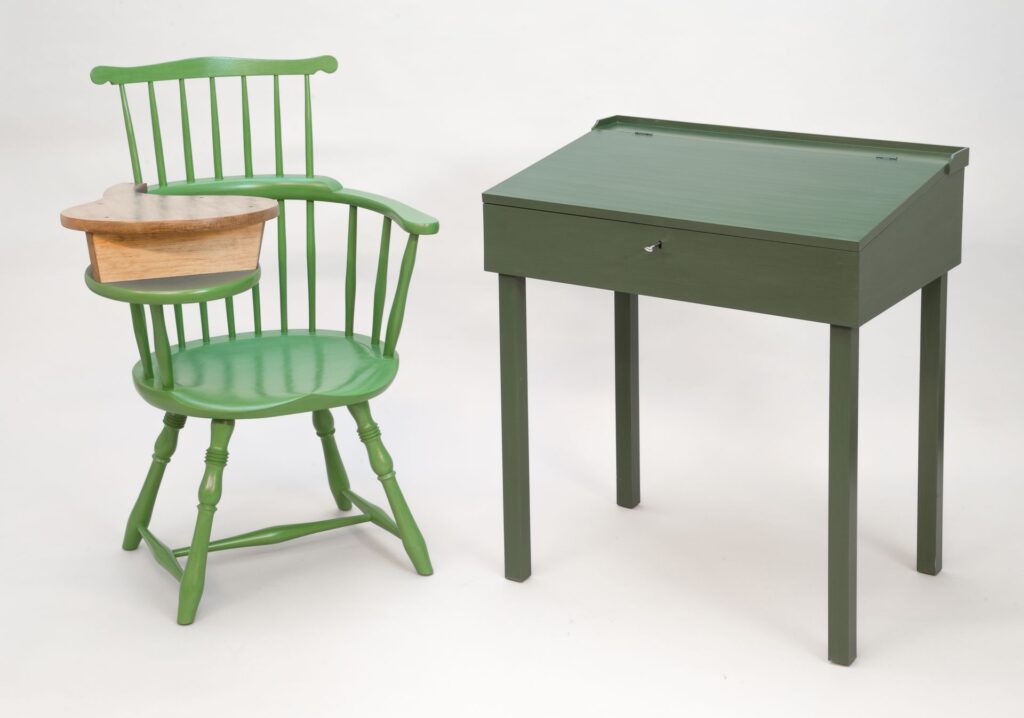
Now, thanks to Dan Faia CF ’94, Department Head of Cabinet & Furniture Making at North Bennet Street School, they can do more than just look. Dan’s faithful replicas of both Emerson’s writing-arm Windsor chair, where he penned his first published book, “Nature,” and the modest pine desk where Thoreau wrote both his first book, “A Week on the Concord and Merrimack Rivers,” and early drafts of his most famous work, “Walden,” allow hands-on experiences with the iconic furniture pieces.
One recreation of Emerson’s chair is on display in what was his second-floor study at The Old Manse, the transcendentalist leader’s onetime Concord home. The original versions of both furniture pieces, a second recreation of the chair and one of Thoreau’s desk, are in the permanent collection of the Concord Museum. They were the subject of the recent exhibit, “The Anatomy of a Desk: Writing with Thoreau and Emerson.”
“What was cool about the exhibit is that you could sit in my chair or at my desk while right next to them, behind glass, are the originals,” says Dan.
Close Looking
“This was completely in keeping with our focus on objects in discussing history, especially in our school programs,” explains Concord Museum Curator David F. Wood. “We emphasize close looking.”
When it comes to preparing to recreate a piece, close looking is the order of the day. Christie and David both worked directly with Dan as the seasoned practitioner of traditional cabinet-making examined and measured both pieces.
“The chair has long been revered, first by the Emerson family and later by the town of Concord. So we were only too happy to be with Dan on the floor under the old chair, with flashlights, for hours. As curators, this is what we live for,” says Christie with a laugh.
The project’s first phase—for the Old Manse—focused on Emerson’s chair. Its color presented a quandary for the trio.
“The three of us had a real philosophical discussion about what color the replica should be. The original, which we believe was first acquired by Emerson’s step-grandfather, Ezra Ripley, a minister at First Parish in Concord, is now painted black. A little bit of the black paint was chipped, however, and underneath was green, a typical color for Windsor chairs in the 18th and 19th centuries,” explains Christie.
“We ended up going with green for the replica, and we left the top writing surface – likely added by Ripley – natural, as it would have been when Emerson came upon it in 1834. We knew visitors would wonder why the original is black and its replica is mostly green, but we did our research and can now tell the history of the chair,” she says.
David concurs, “That’s what you have to do. The true color was hiding under a coat of black paint. That kind of discovery is all part of what goes into looking at what the chair was like when Emerson sat in it to write.”
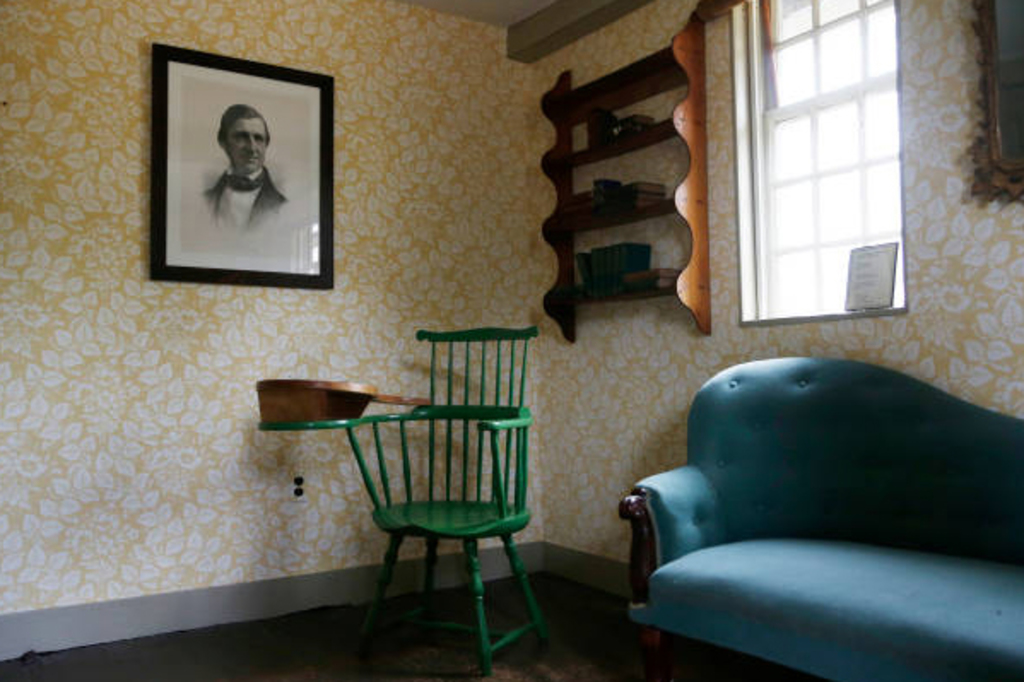
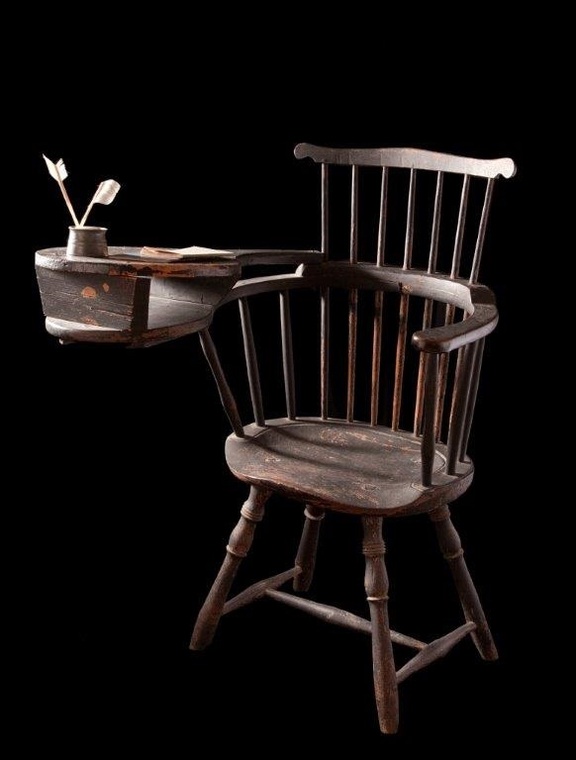
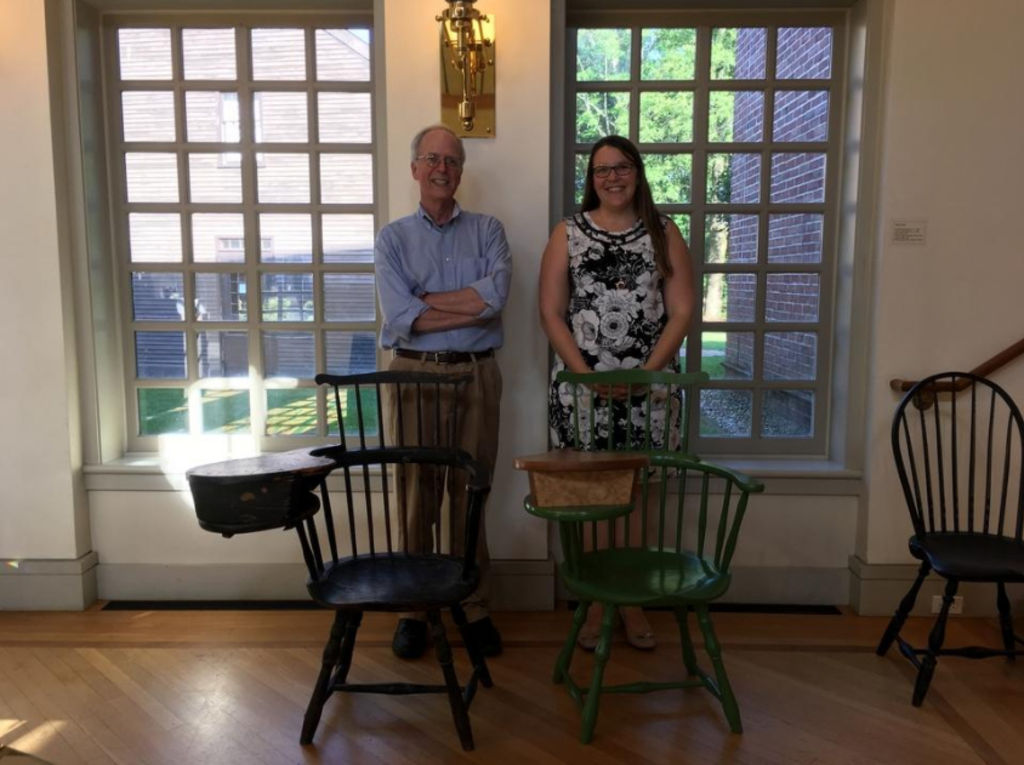
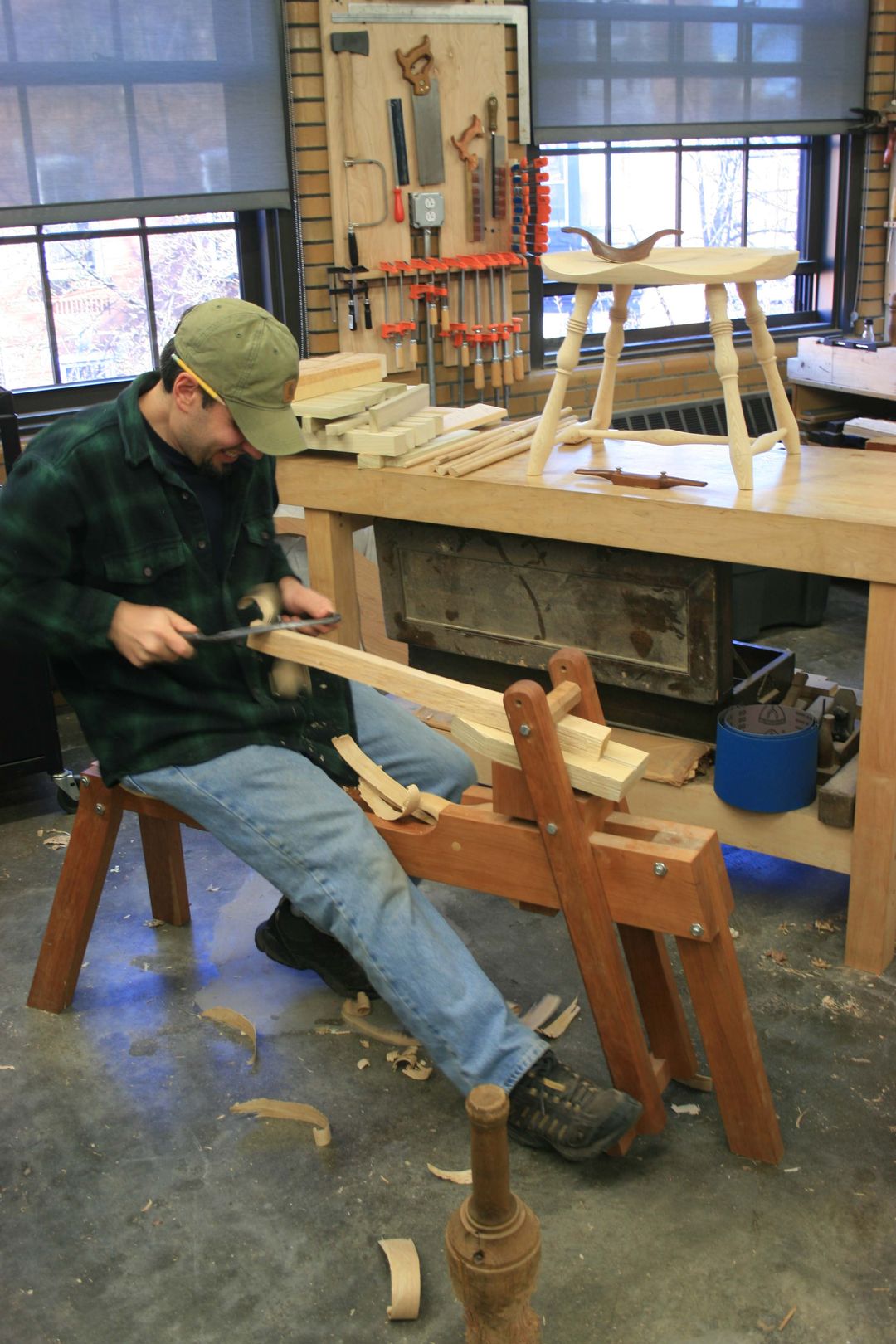
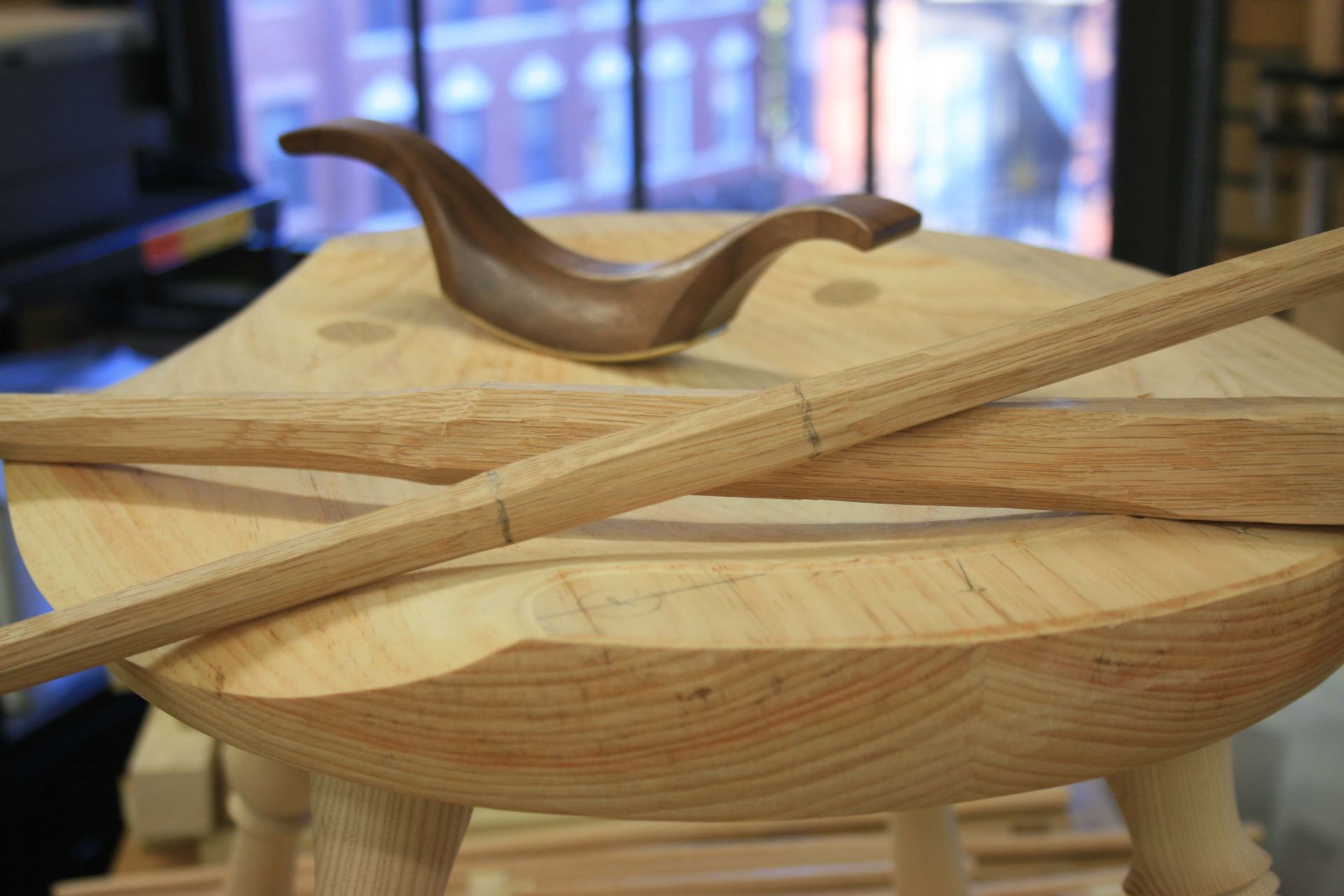
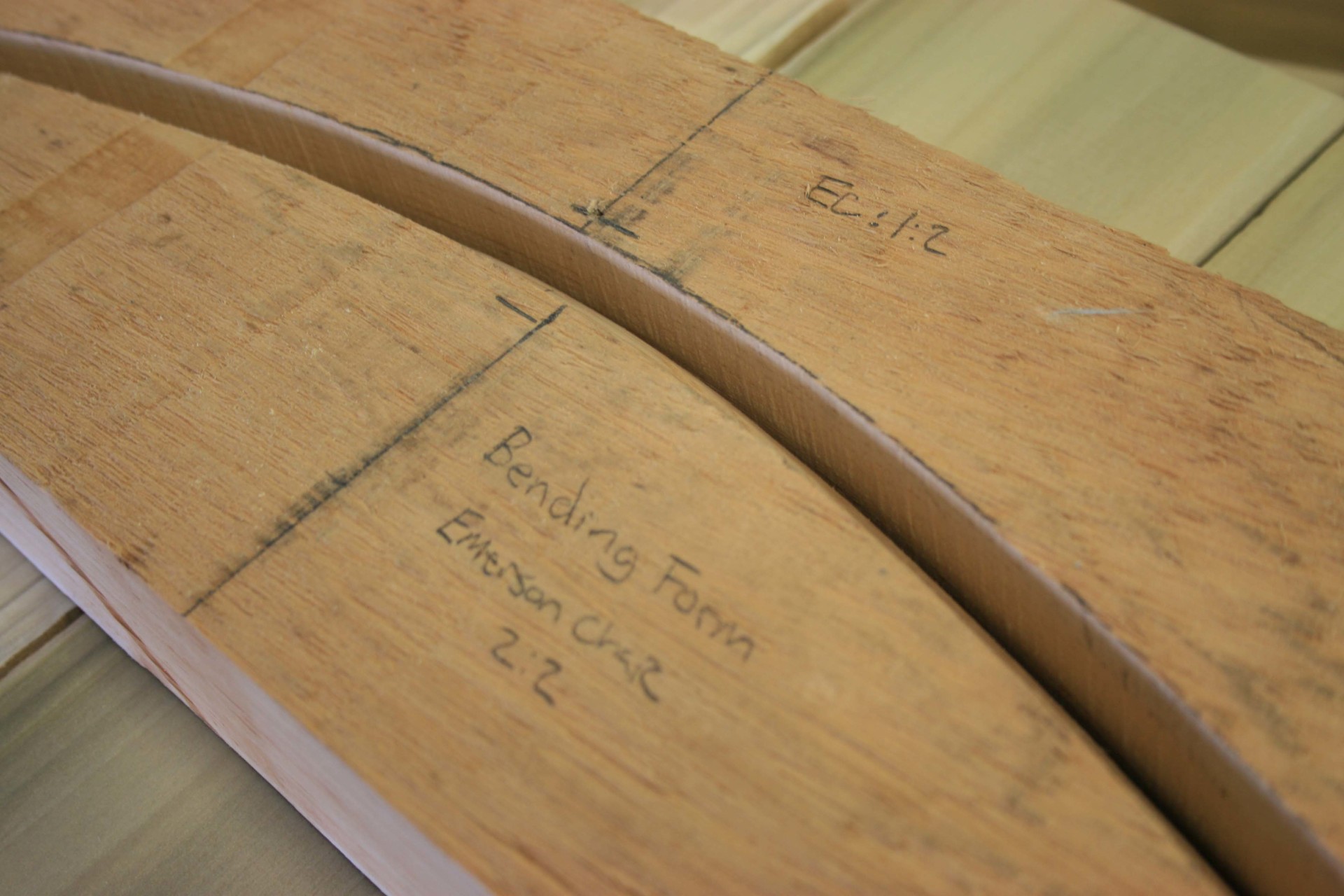

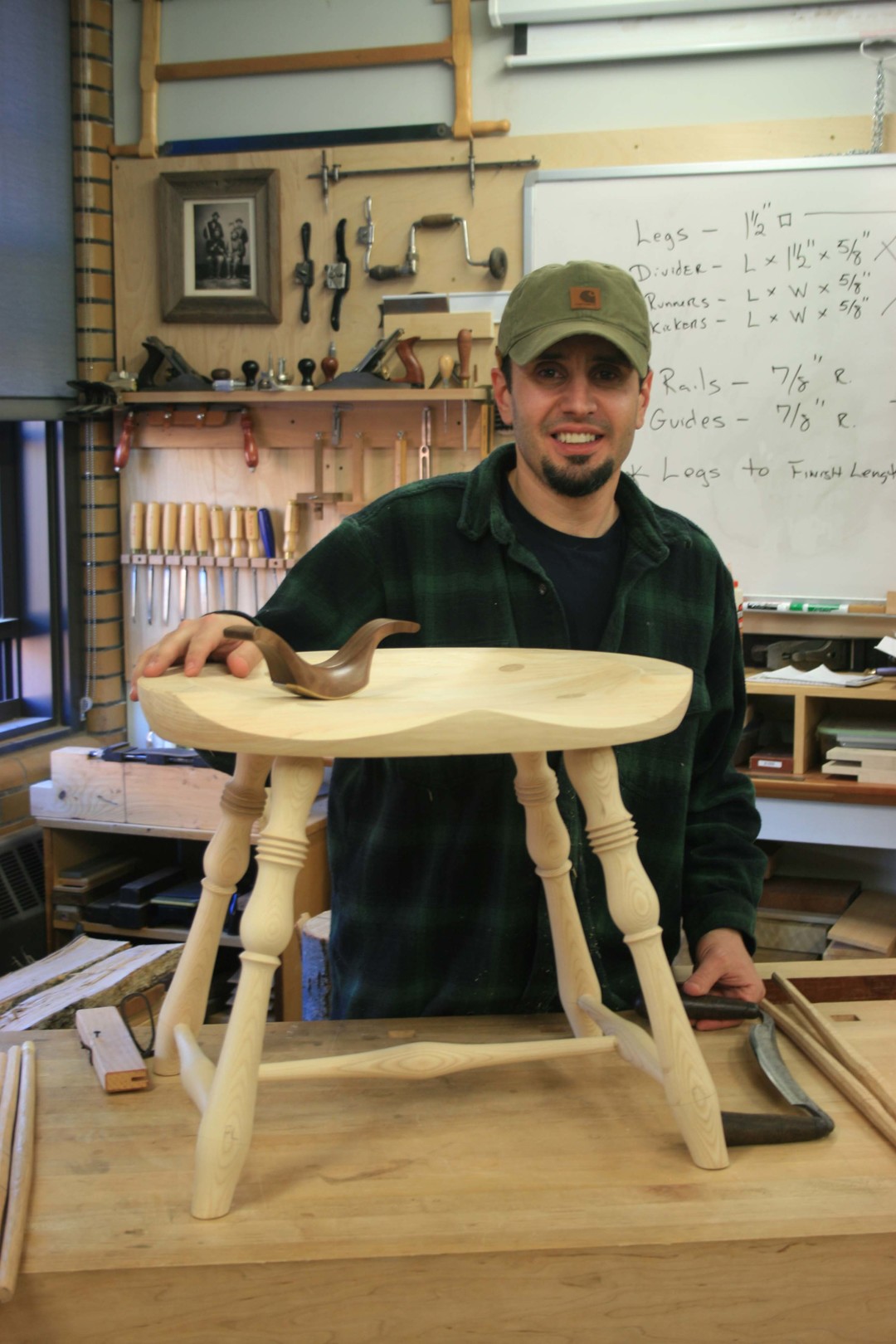
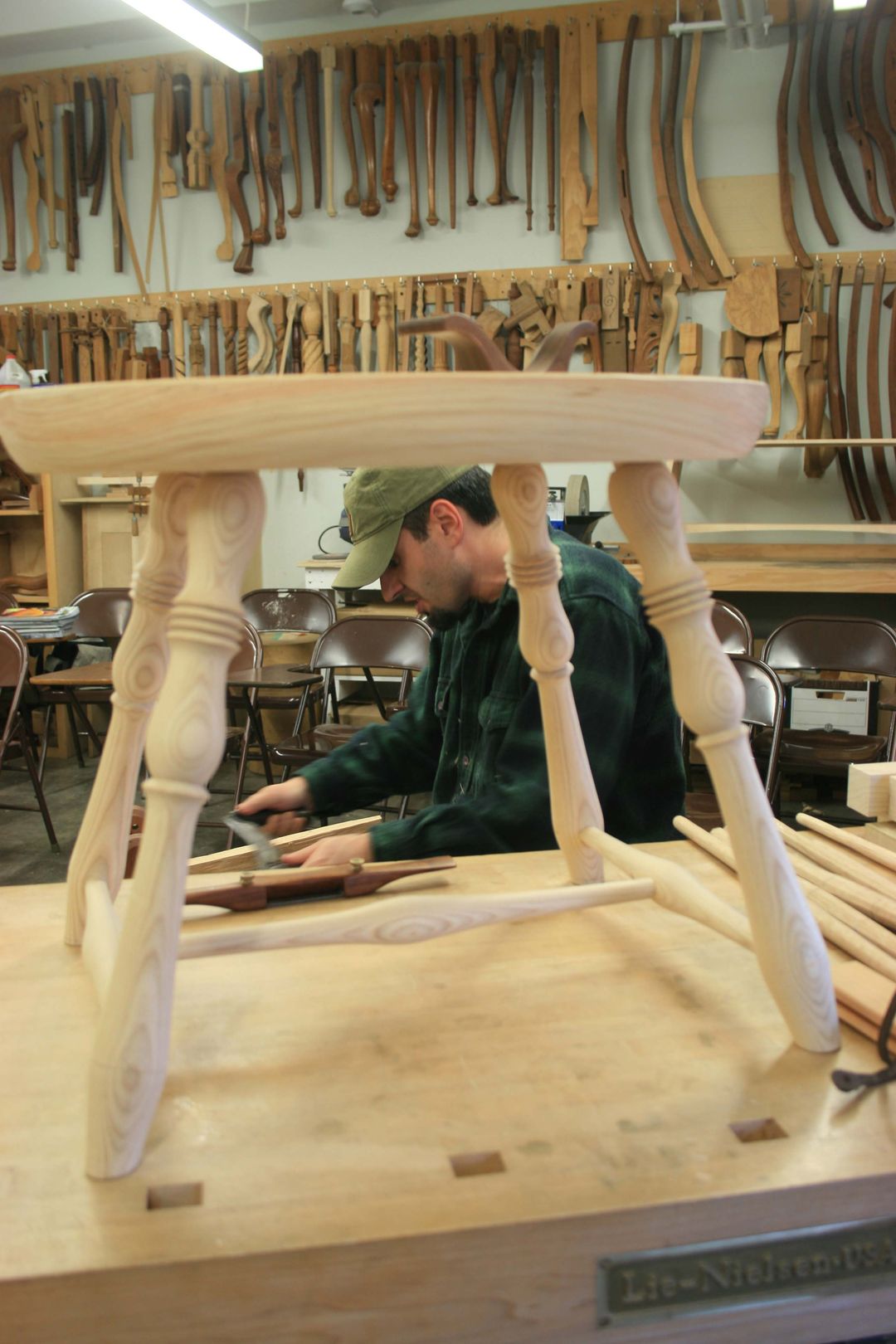

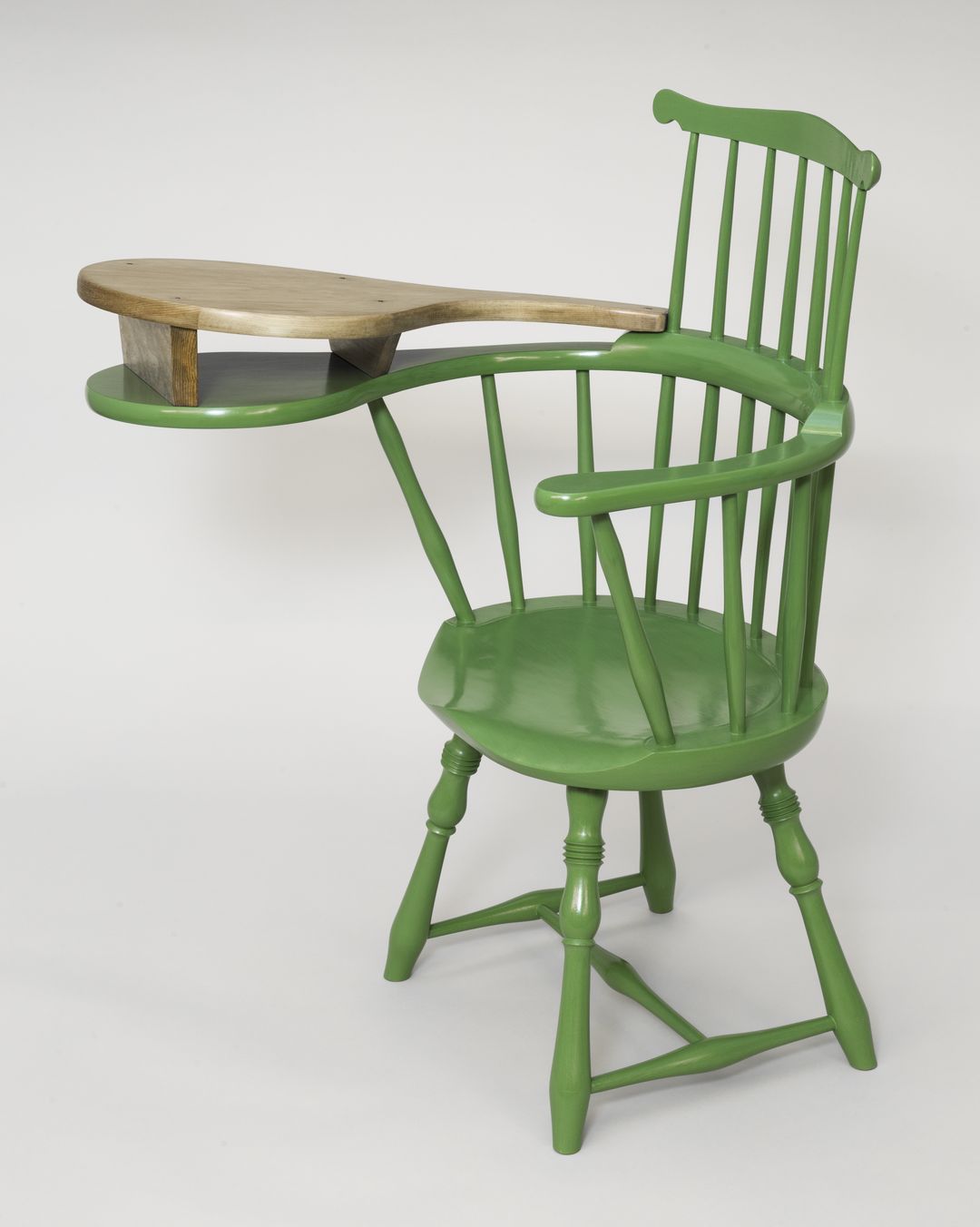
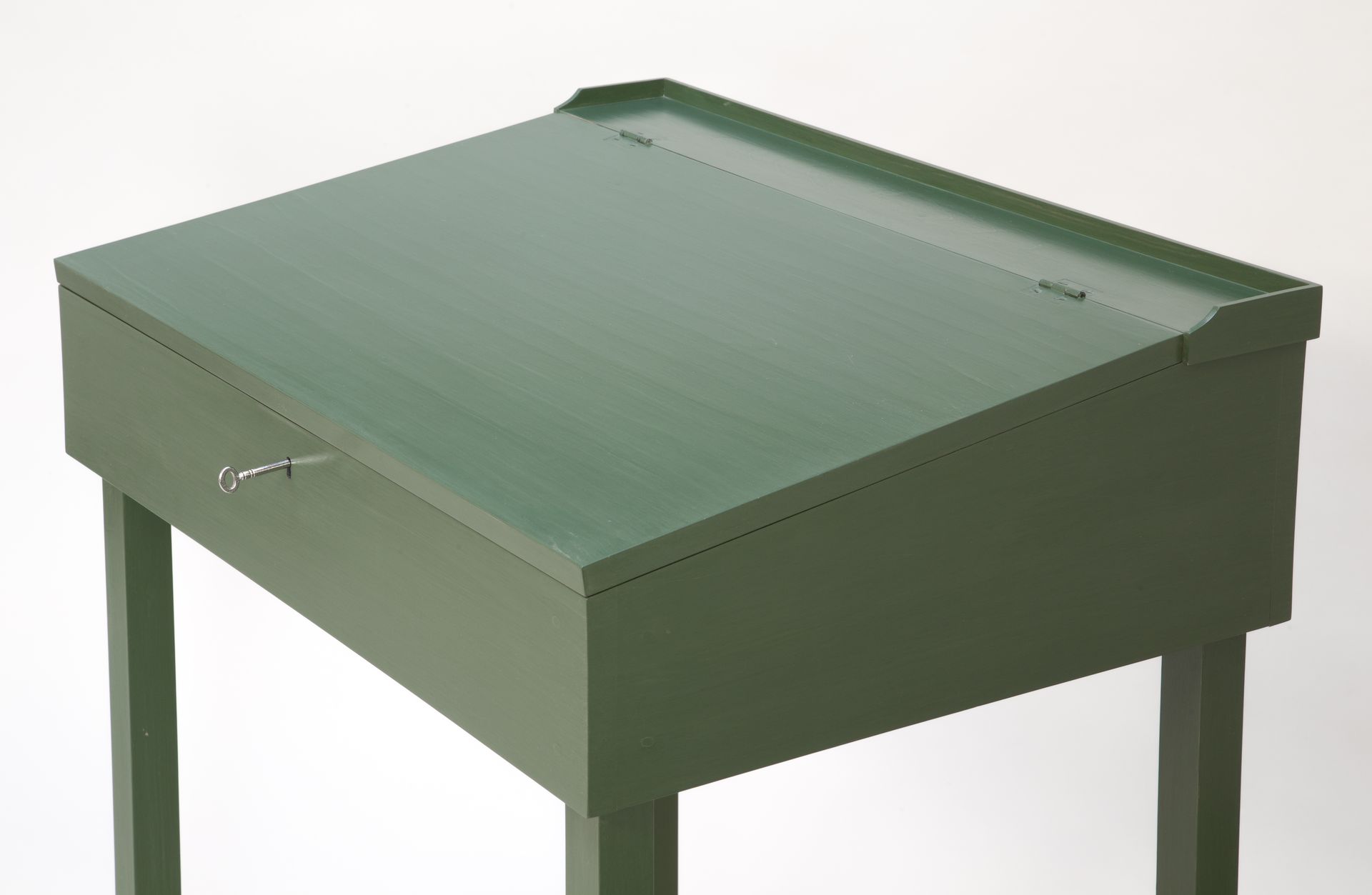
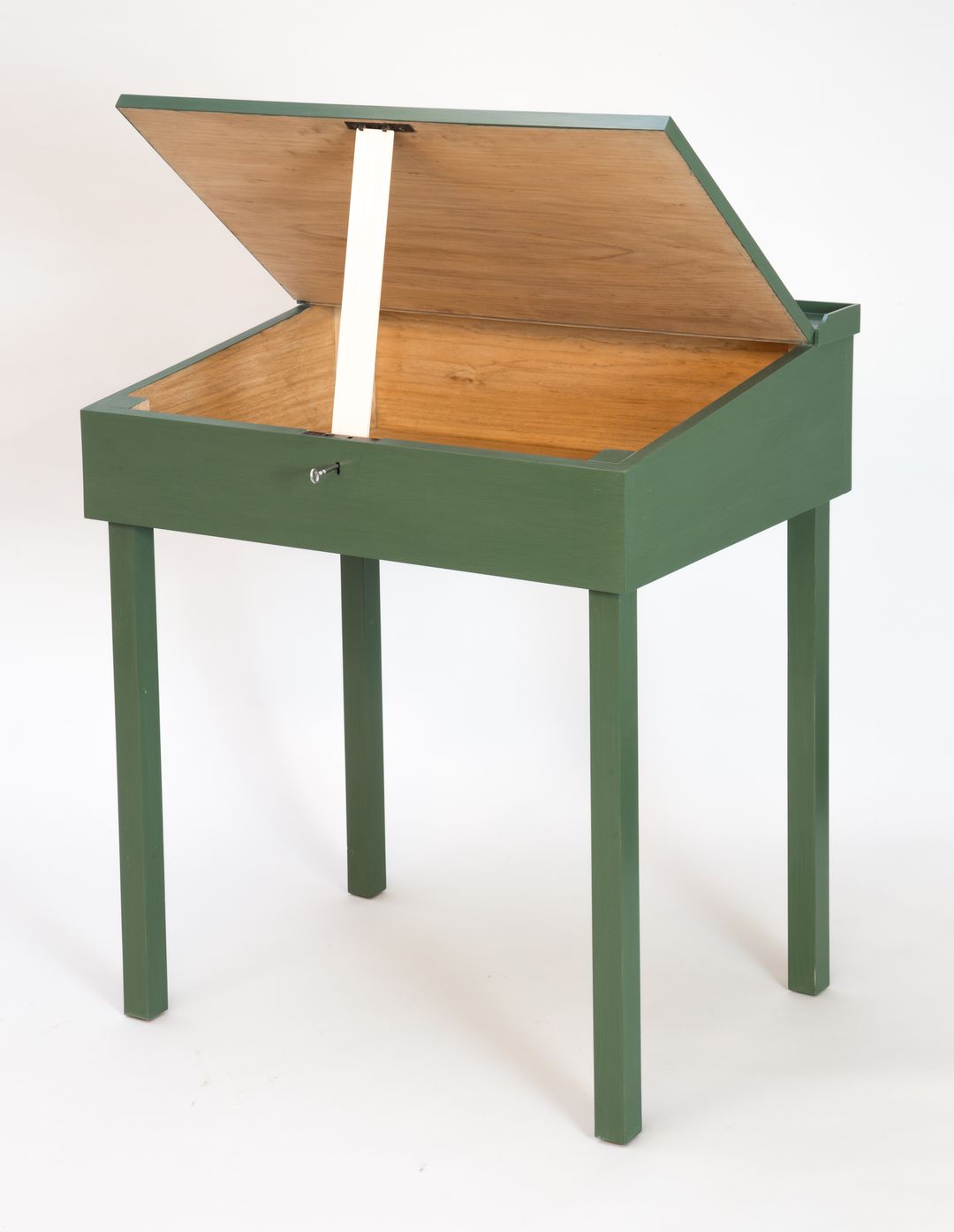
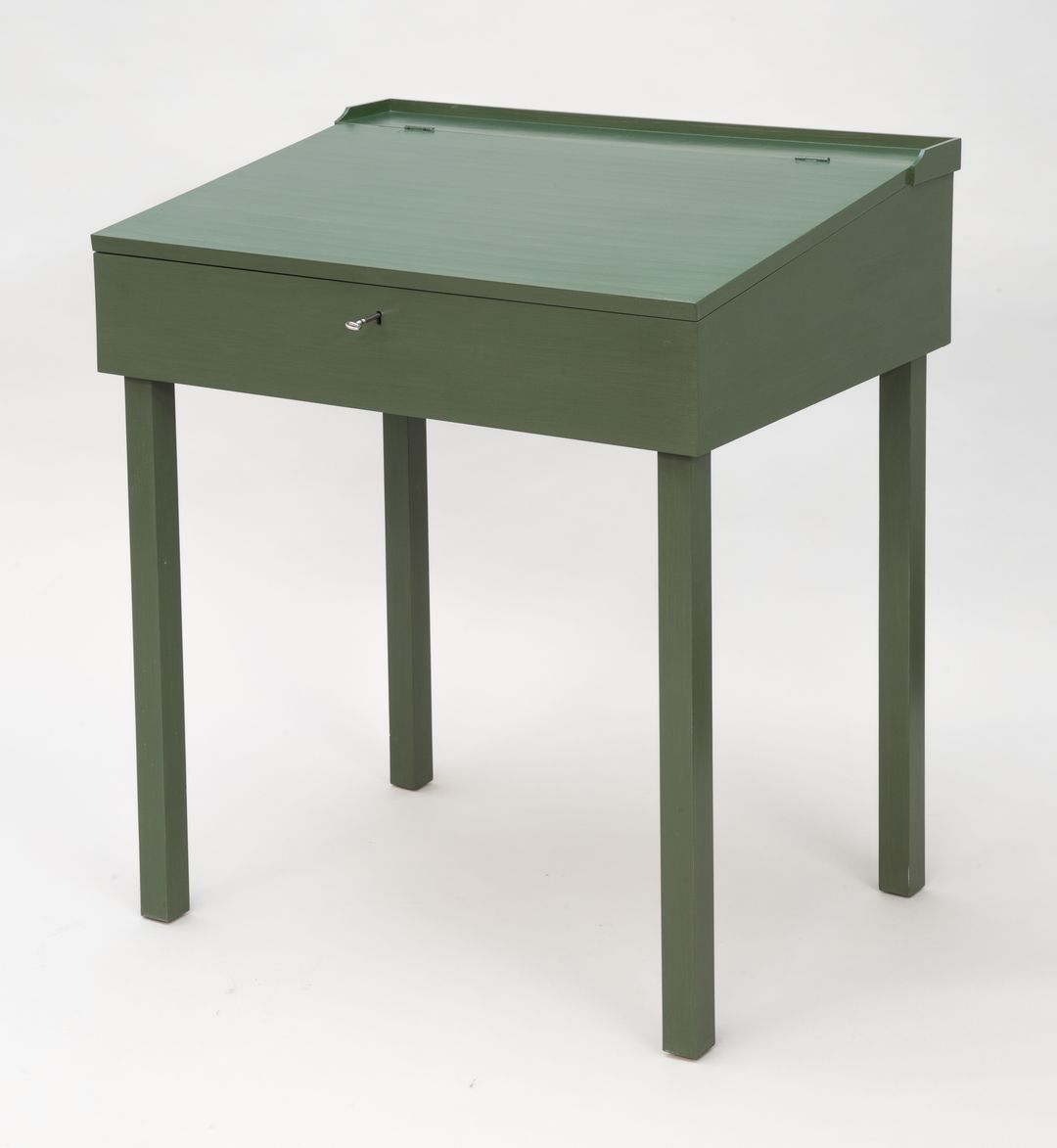
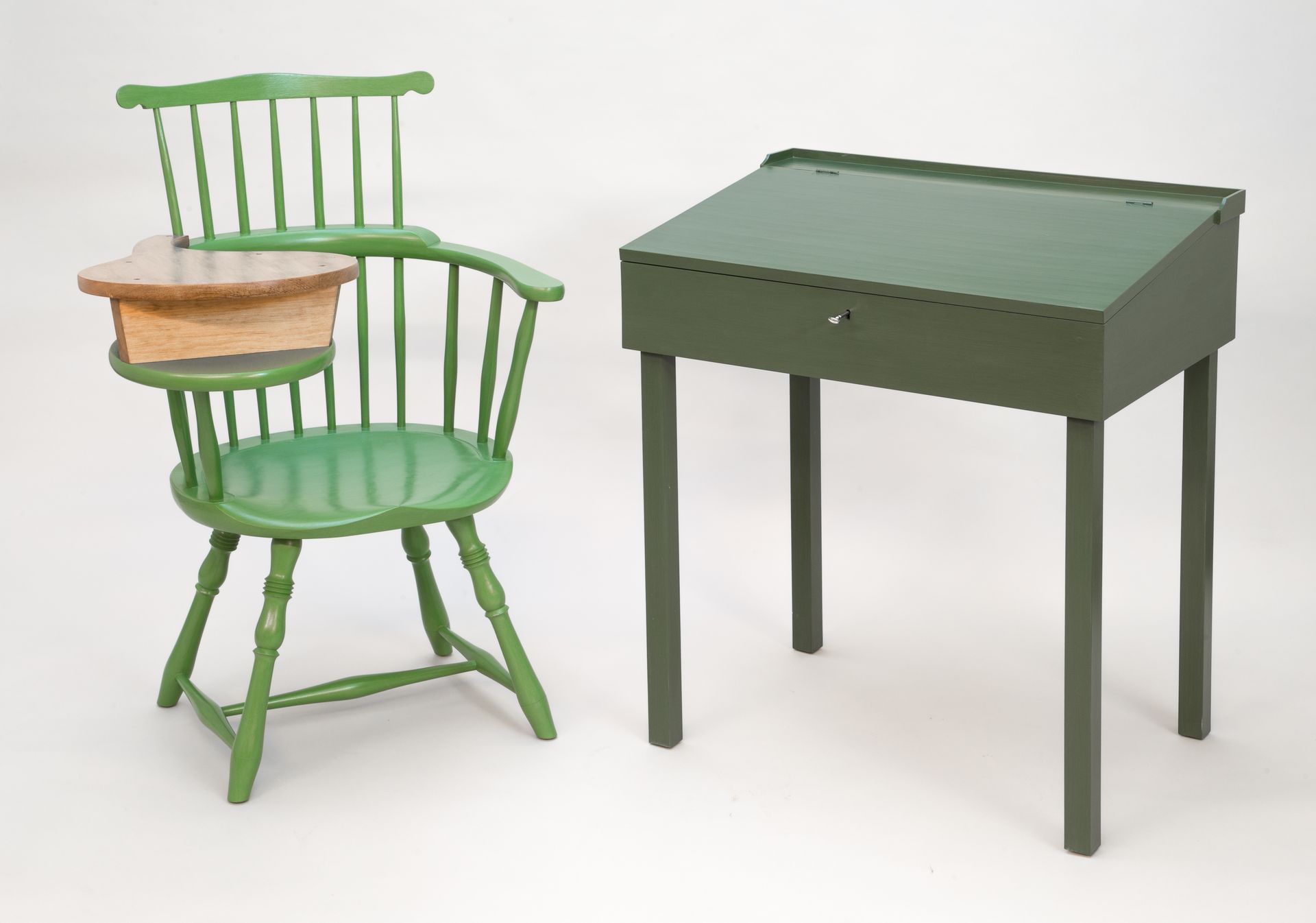
Hand-Tooled History
The surface colors may be different, but many of the same materials are used in both. Dan also made the recreation using only hand tools, as he says Windsor chairs were made historically.
“The Windsor chair was at its height between 1760 and 1830, during which time they could be found everywhere. When we examined the original, we could see that it was made of cherry wood and also ash, pine, and oak. When I work with a museum, I make the best facsimile or replica, not a precise reproduction. Replicating something takes about twice as long as making an original.
“My first reaction was that the chair was odd—kind of quirky. It’s a writing-arm chair that’s been modified, with an extra writing tablet added to make it more comfortable for the user. There are plenty of writing-arm Windsors around, but no others just like Emerson’s. And the style of the turnings—the legs and stretchers—really say it is from Concord,” says Dan.
In 1884, the original chair was given by the Emerson family to Cummings Davis, founder of the Concord Museum collection. The Old Manse had been built in 1770 for the Rev. William Emerson, grandfather of Ralph Waldo Emerson, and remained in the Emerson-Ripley family until 1939 when its deed was transferred to The Trustees of Reservations, the world’s oldest land-conservation organization.
“We recognize that for many visitors, The Old Manse is almost a spiritual place. It’s been the site of some amazing moments in history. The American Revolution started just outside its windows and the second revolution – the intellectual revolution – took place there in the 1830s and 1840s. The weight of the history and importance of what happened at The Old Manse makes some of our visitors weep. We’ve all seen it.
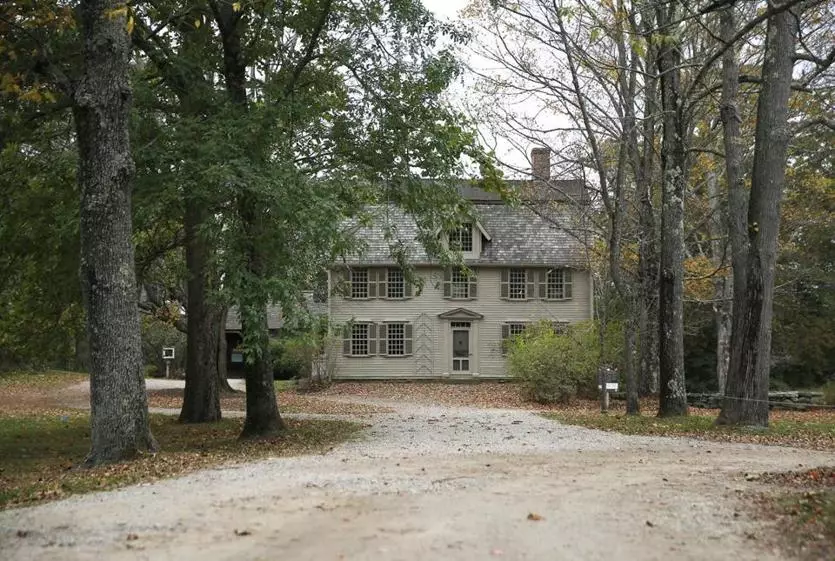
“We used to have another historical chair on display in the study, and we’d explain to people that ‘this was the kind of chair Emerson might have sat in.’ When it came time recently to do some refreshing at the Old Manse, I thought it would be a great opportunity to recreate the writing-arm Windsor and bring it back to the moment Emerson sat in it to write,” recalls Christie, who first met Dan when she was curator of decorative arts at Old Sturbridge Village in Sturbridge, MA.
“Christie contacted me about the project because we had done some reproduction demonstrations at Old Sturbridge for ‘Delightfully Designed: The Furniture and Life of Nathan Lombard.’ That exhibit was part of ‘The Four Centuries of Massachusetts Furniture,’ which involved the Concord Museum and 10 other cultural institutions throughout the state. NBSS was the only school, or maker’s organization, that participated,” says Dan.
WATCH NOW: C-Span video on Old Manse and Ralph Waldo Emerson (desk at 8:15)
The Best Seats in the House
His work replicating Emerson’s chair for the Old Manse was underway when Dan learned that he might need additional materials.
“When I was making the first one, David really wanted a copy of the chair as well for the Concord Museum to go along with my recreation of Thoreau’s desk, so he asked me to make a second one for ‘The Anatomy of a Desk,'” remembers Dan.
The exhibit is part of the museum’s celebration of the bicentennial of the birth of Thoreau. The year-long initiative for 2017, “Be Thoreau,” explores the writer’s work from a historical and contemporary through special exhibitions and public programs.
“In our exhibit, we ask visitors, ‘Does the desk matter?’ In the case of Thoreau’s desk, there is no place where he would have spent more time. It’s a simple pine schoolroom desk, which Thoreau acquired from his brother John at his death in 1841. It was an adequate desk, though, so, seeing nothing wrong with it, Thoreau never replaced it. Instead, he took the desk with him everywhere including to his cabin at Walden Pond.
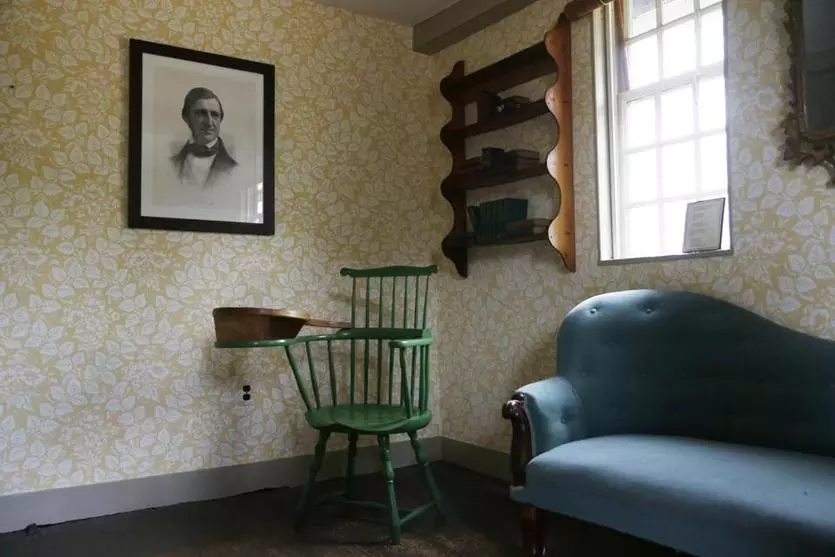
“He wrote in the morning, walked in the afternoon, and then came back to write more. He kept his journal locked in the desk whenever he was away from it. And you can tell by the minimal wear patterns that he took very good care of it,” according to David, who says that replicas are an important part of museums today.
“Reproductions definitely add something. Just putting originals on display is both satisfying and gratifying, but it’s also nice to be able to extend that experience for visitors.”
At the Concord Museum and the Old Manse, that means welcoming people to have a seat while they ponder history.
“We invite people to sit in the chair and it’s always interesting to see all the different reactions,” says Christie Jackson – senior curator for The Trustees of Reservations, the non-profit organization that operates the Old Manse as a museum – who estimates some two to three thousand people have availed themselves of that opportunity since the chair was put in place in April 2016. (For the record, Dan was the first person to try out the first replica chair.)
And while Concord Museum’s special exhibits close after a prescribed time, David says he hopes the museum’s connection to NBSS will be open-ended.
“As a sloyd school, NBSS emphasizes the relation between hand and mind, which goes along with what we want our visitors to experience. We very much encourage the sloyd attitude at the Concord Museum. We value our relationship with NBSS and were pleased to mark the school’s 125th anniversary in 2009 with a special exhibition entitled ‘A Dedication to Craft: North Bennet Street School @125.’
“NBSS is a great resource for us. They’re not going away and neither are we. We’ll continue to work together long into the future,” says David.
Dan Faia and twelve other NBSS furniture makers partnered with Christie Jackson and The Trustees of Reservations on an exhibition highlighting original, modern takes on traditional pieces from The Trustees’ collection. “Conversations in Craft: Furniture from The Trustees Collection and North Bennet Street School” was displayed at The Fruitlands Museum in Harvard, Massachusetts, and North Bennet Street School during the spring of 2018.
